�
�
�
�
�
� Owner: Lorenz Hassenstein
� � City: Ridgefield, CT
� Model: 1968 MGB-GT
� Engine: Rover aluminum V8 (5.0L)
� Conversion by: owner
��
�
�
�
�
�
�

�
Lorenz Hassenstein's Rover Aluminum V8 Powered 1968 MGB-GT
� as published in British V8 Newsletter, Volume XV Issue 3, December 2007�� Owner: Lorenz Hassenstein
� � City: Ridgefield, CT
� Model: 1968 MGB-GT
� Engine: Rover aluminum V8 (5.0L)
� Conversion by: owner
�
| Engine: | �4.6L Rover motor (with cross-bolted main bearings, etc.). �
The engine has been built up to 5.0L (i.e. stroked via offset crankshaft �
grinding), balanced, and blue-printed. It has roller rockers and a new �
roller cam (108 degress lobe separation, 258/265 duration at 0.585" lift, �
which replaces a previous cam with 110 degrees lobe separation, 240-244 �
duration at 0.050" lift), oversized valves, ported Buick 300 aluminum �
heads, and JE pistons. MSD ignition and Simple Digital Systems EFI �
management system.�
| �
| Induction: | �Fuel injected with 40 lb. injectors, open plenum with a 75mm �
throttle body fed through a K&N Filter; a water injection system �
is next on the list. | �
| Oil System: | �The geroter oil pump is inside the Rover front cover, but the front �
cover was modified so the oil relief valve and a remote filter could �
be mounted on the fender well. You can thus easily adjust the oil �
pressure to whatever you want it to be. It's currently adjusted to �
provide 30lbs at idle, 50 while cruising, and 75 when you get on it. �
This installation also provided clearance for the stock MGB steering rack. | �
| Cooling: | �C&R 3" core double pass aluminum radiator; Spal 16" puller and �
a 12" pusher with a fan controller unit. Coolant is glycol. 25 row �
oil cooler mounted under the deck. Undersized pump pulley. | �
| Exhaust: | �1 5/8" thru-fender headers into a dual 2.5" exhaust system with an X-pipe �
under the transmission. (See photo.) The high performance mufflers are �
mounted vertically on either side of the fuel cell. | �
| Transmission: | �WC T-5 with a cruising 5th - great fuel economy on the highway and it's�
dependable handling the power. The bell housing was machined to ensure �
proper run-out. Tilton hydraulic throwout bearing (slave cylinder) with �
a Center Force Clutch. Custom fabricated driveshaft by D&D Fabrication. | �
| Rear Axle: | �Dana 44 from a Jeep or mail truck, with 3.73:1 gears and a limited �
slip differential. (Bought from D&D Fabrication.) It fit nicely �
under the body kit! | �
| Front Susp.: | �Uprated lever arm shocks with comp valves and 20 weight oil; 2" lower �
racing springs with longer lower arms all sitting on nylatron bushings. �
1" custom sway bar with fully adjustable end links making it capable �
of setting pre-load. | �
| Rear Susp.: | �Koni shocks on 2" lowered racing springs; 5/8" sway bar; anti-tramp bars�
and track bars. | �
| Brakes: | �12" vented front rotors and 12" solid rotors in back. Wilwood 4-pot �
calipers on all 4 corners with a Tilton dual master, remote reservoirs �
and a rear brake proportioning valve. | �
| Wheels/Tires: | �The street tires are 16x8's with Pirelli 225's in the front and 255's �
in the rear. For competition, the tires are 17x8's "DOT" slicks (225's �
in the front and 255's in the rear.) | �
| Weight: | �2,089 with a half tank; weighed some five years ago and much has changed �
on the car: glass, window cranks and all unnecessary weight has been removed. | �
| Electrical: | �Mix of MG and new wiring necessary to support the EFI, fuel pumps and �
electronics. 160 amp alternator. Gauges are Autometer comp. No audio! �
(Weighs too much.) The battery is installed in the LH battery box. | �
| Chassis Mods: | �The car was stripped and etched before the Sebring body kit with a �
fiberglass hood was installed. A six point roll cage was also installed �
however I never liked the installation. The forward track bar mount also �
acts as a safety catch for the driveshaft. The car has a 14 gallon fuel �
cell and a 4 gallon surge tank (in the RH battery box) so the EFI system �
won't ever run dry under cornering. I installed an aluminum deck in the �
back to add an additional fire barrier between me and the fuel cell. �
| �
| Interior: | �The interior was stripped and painted lightweight door panels were fitted. �
The dash is original, except stripped of its padding and modified to �
take the 2 5/8 inch gauges. There's no insulation and the MG rubber �
floor mats and carpet all slide right out. A friend had a Momo carbon �
fiber chair and competition wheel and belts which he gave me! The side �
glass was removed and the window crank assemblies were also tossed. �
I keep a passenger seat in the car so I can �
scare folks who want a ride! | �
| Performance: | �Unknown. All I can say is it scares me to this day. 1st and 2nd under �
full throttle go by too fast to register. Just watch the shift light and �
listen for the rev limiter! 3rd is just silly. 6,000 rpm in 4th puts me �
at 125 MPH. I can break the tires loose in second at just about any time �
I want (and too often around corners). The suspension is soft enough that �
it launches great and tracks very straight. It is as predictable as any �
factory MG ever was. It handles like a dream, but I could use a new front �
coil-over set up from Fast Cars. | �
| Comments: | �I would tell anyone to invest in the clutch system and the brakes. I had �
a leaky slave that just made a mess and slopped around and made noise... �
and it couldn't take the pressure. The Tilton throw-out bearing and �
Center Force clutch are bulletproof. The drive train in the car is as �
solid as it gets. The brakes also need to be bullet proof! Stopping from �
100 plus is important. �
� I would also suggest that you assemble the car and then take it apart to � have it painted and to do the final assembly. Drive it around dirty for � a while first - who cares! - it will look good in the end. I also think � you need to think in systems and do your homework. A 300+ (rear wheel) � motor with the stock suspension isn't too safe. I am also still finding � new gismos and gadgets that I wish I had some years ago... which makes � it fun I suppose.� � Tim Lanocha of Lanocha Racing continues to be a great resource and is � great to work with.� � I love it! I have owned a 1970 MGB that my brother bought when he got out � of Viet Nam. I got my hands on it in 1982 which is when the affliction � began. I started this GT V8 project in 1996 when my daughter was born. � While I love tooling around in my stock MGB, smokin' old fogies in Porsches � and Vettes (and "tuners"/kids) in the GT makes me as happy as a pig in... | �
| Completed: | �June 2003 (although modifications are ongoing!) So far it's been driven �
about 5000 miles, as of October 2007. | �
�
��
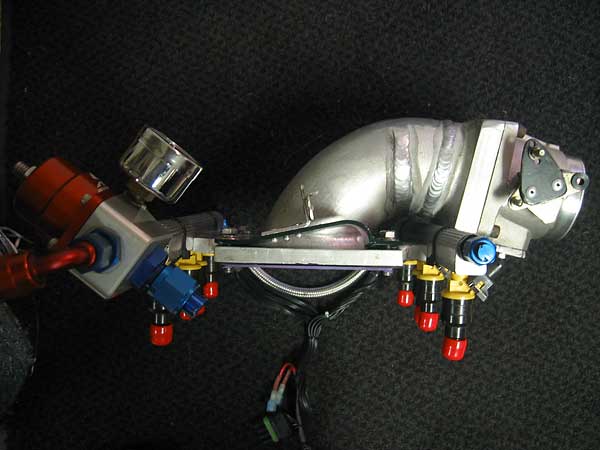
� �
I've been running 30 lb injectors, but they're getting replaced with 40 or 50 lb �
injectors this winter. �
� The braided hose on the forward side of the regulator goes to a bleed cap (for removing� air from the system) and to the fuel pressure sender and fuel pressure cut off switch. � (These components are mounted high on the passenger side inner fender.) The SDS EFI � CPU can be ordered with a fuel-pressure cutoff switch to stop fuel flow in the event � of an accident. The relay works by monitoring both fuel pressure and engine RPM. If �
� I'm running 50 lbs of fuel pressure, which is more than enough.�
��
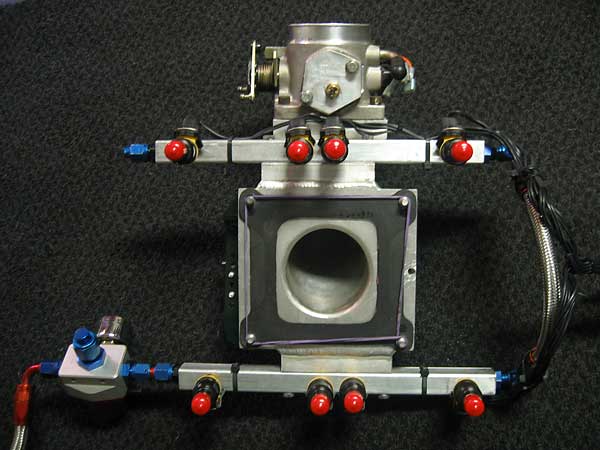
� �
The throttle-body is a BBK 75mm unit and the plenum and plate were fabbed up so �
everything can bolt together snugly. �
�
��
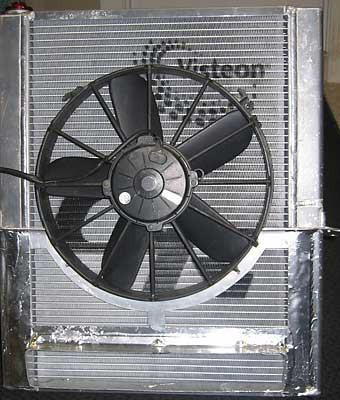 �
�
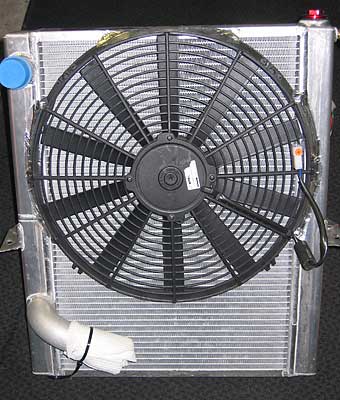
� �
C&R (Visteon) aluminum radiator, viewed from front and back respectively, with electric fans. �
The Spal fan electronic fan control unit is mounted inside the car (by the passenger's left knee).�
��
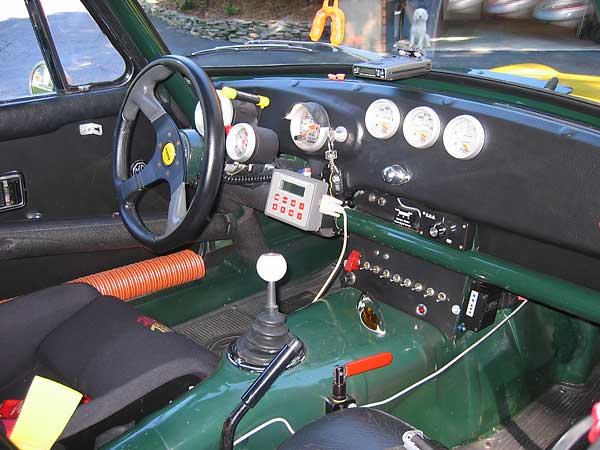
� �
The dash is the original part (1968 MGB "Abingdon pillow"), except with all �
the padding stripped off, holes welded closed, new larger holes punched where �
the gauges sit currently, and recovered in vinyl. �
� The switch panel in the center console is just a piece of sheet aluminum with � holes punched for the switches. I isolated everything electrically. There are � 4 fuse panels in the car; two under the hood replacing the MG unit and two tucked � up under the dash adjacent to the battery cutoff switch.�
��
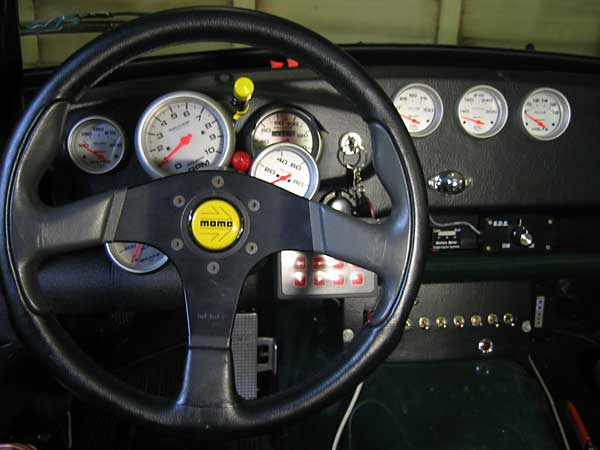
� �
The toggle switches control the ignition, EFI CPU, fuel pump, surge (fuel) pump,�
Spal electric cooling fans and controller, headlights, hazard lights, driving �
lights, and windshield wiper. The horn, running lights, head lights and �
wipers are still wired through the MG wiring harness which I took out, �
inspected, cleaned and reinstalled. The high beam and turn signal indicators �
were relocated to the center switch panel. The on/off dash light switch was �
also retained as was the center console map light. I kept the cigar lighter �
to power internal lights and radar detectors, phone chargers, etc.�
� All front-to-back wiring (e.g. the running lights circuit) runs along the inside � of the passenger side floor. The fuel lines are run under the passenger side � floor and it seemed to made sense to separate them in case of an accident.� The carpet and floor mats slide right out, making it easy to remove weight when � heading off to the track.�
��
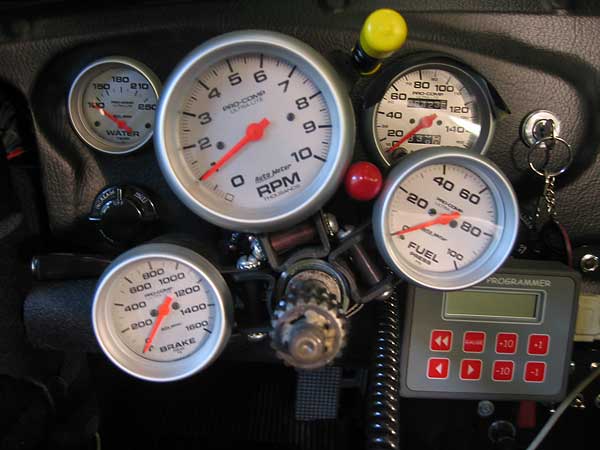
� �
The steering wheel is a quick-release Momo unit. The steering shaft and linkage �
were shortened and re-routed. The car has speedometer, tachometer, oil pressure,�
fuel pressure, brake pressure, water temperature, oil temperature, and volt meter�
gauges installed. The yellow light tells the driver when to shift, and the red �
light alerts him if oil pressure drops. There are also mechanical oil pressure and �
fuel pressure gauges under the hood for obvious reasons.�
� The SDS electronic fuel injection control box is pretty easy to use. (You can � see the control unit to the right and below the steering column.) The system � includes a tach pickup, water temperature sensor, air temperature sensor, MAP � (manifold absolute pressure) sensor, and throttle position sensor. (There's � also a cold start solenoid if you want to hook it up.) It sounds complex, but � it isn't. I have had lots of mechanical motor issues but never once has the � EFI caused a problem.�
��
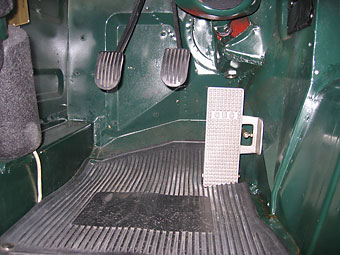 �
�
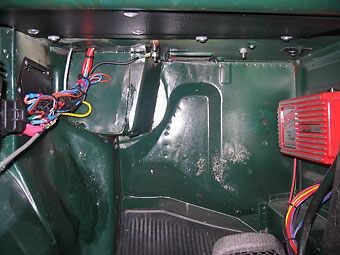
�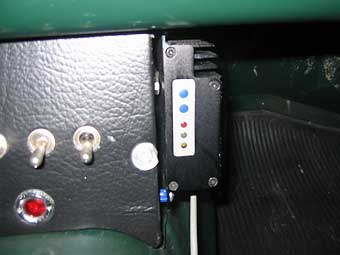 �
�
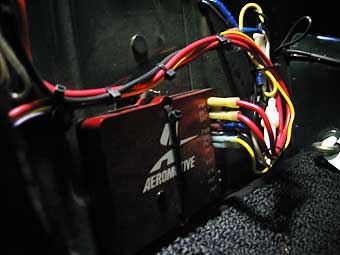
� �
The gas pedal is floor mounted, and the throttle is actuated by a heavy duty �
cable with locking retaining spring clips.�
� The fully programmable Spal dual cooling fan control unit is shown on the � mounted on the passenger's side of the transmission tunnel. The MSD ignition � box is mounted on the opposite side of the footbox. Note that it's important � to physically separate the ignition system from the EFI wiring to reduce the � chance that radio frequency interference will cause the EFI unit to malfunction.�
� The bottom righthand photo shows the EFI high-pressure fuel pump control unit,� which is mounted behind the passenger seat. This unit monitors and controls the � fuel pump duty based on engine RPM.�
��
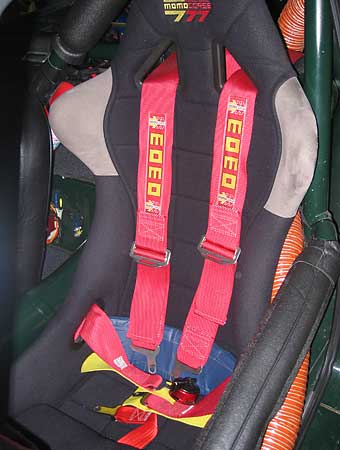 �
�
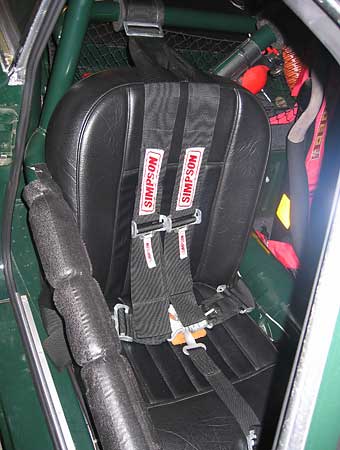
�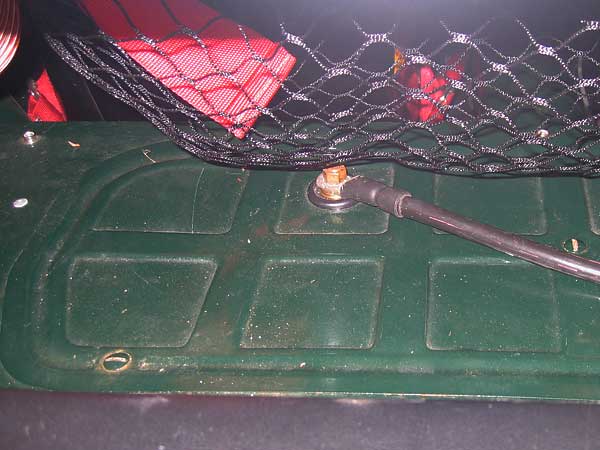
�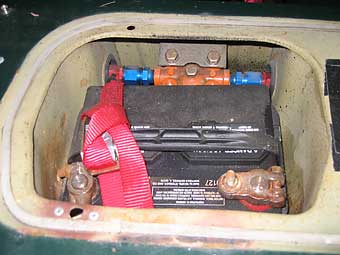 �
�
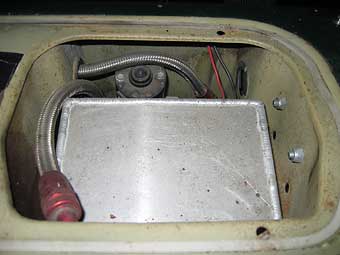
� �
These photos show the battery boxes, as viewed from the rear of the car. The �
LH (driver's side) box houses the battery and a low pressure fuel filter. �
Instead of running battery cables under the floorboard, the main battery �
cable runs through the battery cover via a bulkhead fitting.�
� The RH (passenger's side) battery box houses a custom, fabricated aluminum � fuel surge tank. A low-pressure, high-volume pump transfers fuel from the � fuel cell into this tank. A high-pressure, high-volume pump takes fuel from � the bottom of the surge tank to a filter and then up to the engine. The fuel � moves around the engine's fuel rails and to the pressure regulator. Excess � fuel is released by the pressure regulator, and travels back to the surge � tank. �
��
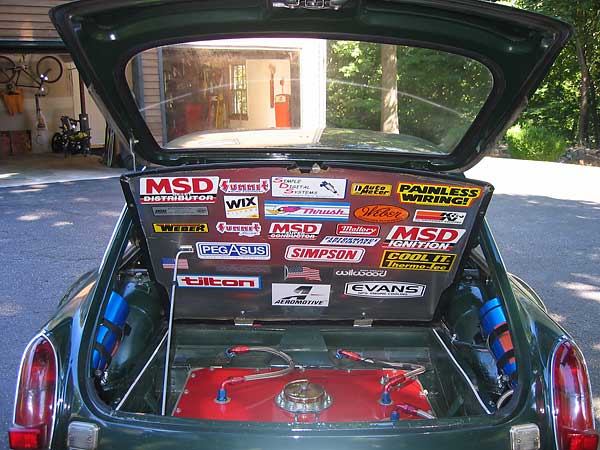
� �
The fuel cell has 3 lines: pick-up, return, and also a vent line back from the �
surge tank to the fuel cell. It's complex for sure, but it is bullet-proof! �
� In this particular installation, the EFI system's electronic controller spins � the high-pressure pump at 50 percent capacity until the engine reaches 3,000 RPMs, � and then it pumps at full output.�
�
�
�
�
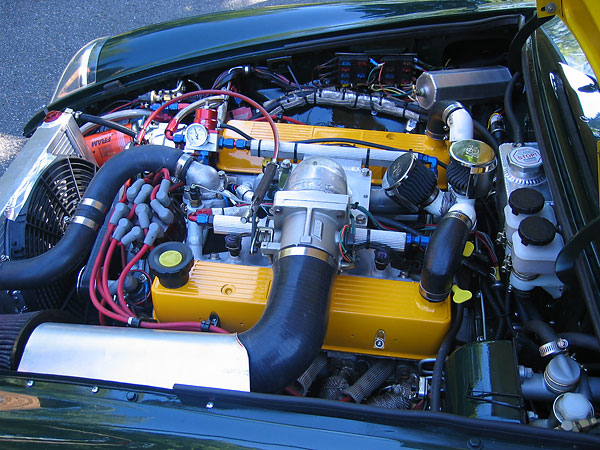
�
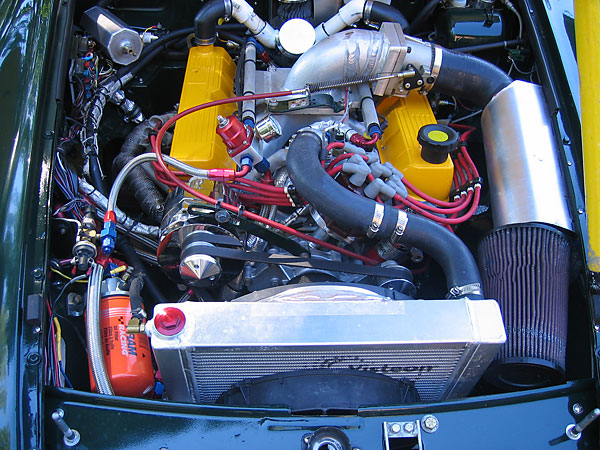
�
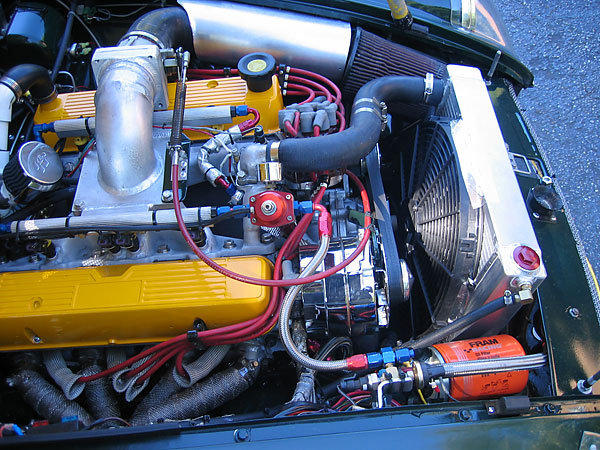
�
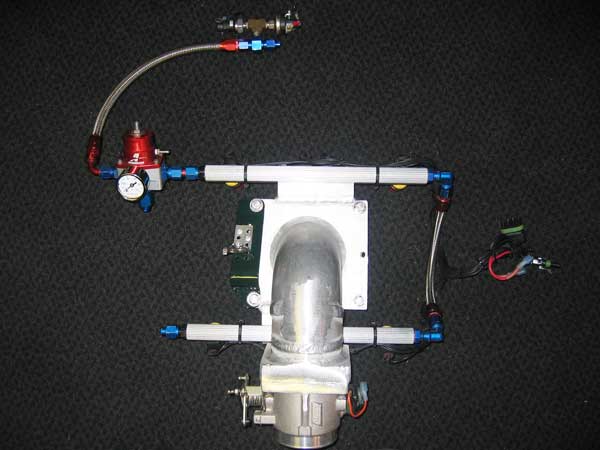
�
�

�
� The braided hose on the forward side of the regulator goes to a bleed cap (for removing� air from the system) and to the fuel pressure sender and fuel pressure cut off switch. � (These components are mounted high on the passenger side inner fender.) The SDS EFI � CPU can be ordered with a fuel-pressure cutoff switch to stop fuel flow in the event � of an accident. The relay works by monitoring both fuel pressure and engine RPM. If �
� I'm running 50 lbs of fuel pressure, which is more than enough.�
�

�
�
 �
�

�
�

�
� The switch panel in the center console is just a piece of sheet aluminum with � holes punched for the switches. I isolated everything electrically. There are � 4 fuse panels in the car; two under the hood replacing the MG unit and two tucked � up under the dash adjacent to the battery cutoff switch.�
�

�
� All front-to-back wiring (e.g. the running lights circuit) runs along the inside � of the passenger side floor. The fuel lines are run under the passenger side � floor and it seemed to made sense to separate them in case of an accident.� The carpet and floor mats slide right out, making it easy to remove weight when � heading off to the track.�
�

�
� The SDS electronic fuel injection control box is pretty easy to use. (You can � see the control unit to the right and below the steering column.) The system � includes a tach pickup, water temperature sensor, air temperature sensor, MAP � (manifold absolute pressure) sensor, and throttle position sensor. (There's � also a cold start solenoid if you want to hook it up.) It sounds complex, but � it isn't. I have had lots of mechanical motor issues but never once has the � EFI caused a problem.�
�
 �
�

�
 �
�

�
� The fully programmable Spal dual cooling fan control unit is shown on the � mounted on the passenger's side of the transmission tunnel. The MSD ignition � box is mounted on the opposite side of the footbox. Note that it's important � to physically separate the ignition system from the EFI wiring to reduce the � chance that radio frequency interference will cause the EFI unit to malfunction.�
� The bottom righthand photo shows the EFI high-pressure fuel pump control unit,� which is mounted behind the passenger seat. This unit monitors and controls the � fuel pump duty based on engine RPM.�
�
 �
�

�

�
 �
�

�
� The RH (passenger's side) battery box houses a custom, fabricated aluminum � fuel surge tank. A low-pressure, high-volume pump transfers fuel from the � fuel cell into this tank. A high-pressure, high-volume pump takes fuel from � the bottom of the surge tank to a filter and then up to the engine. The fuel � moves around the engine's fuel rails and to the pressure regulator. Excess � fuel is released by the pressure regulator, and travels back to the surge � tank. �
�

�
� In this particular installation, the EFI system's electronic controller spins � the high-pressure pump at 50 percent capacity until the engine reaches 3,000 RPMs, � and then it pumps at full output.�
�
�
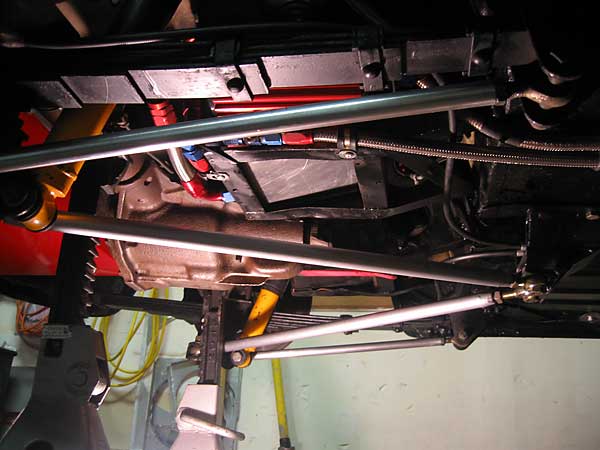
�
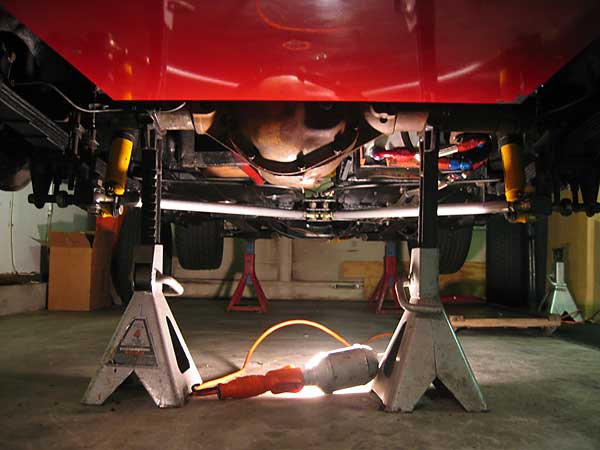
�
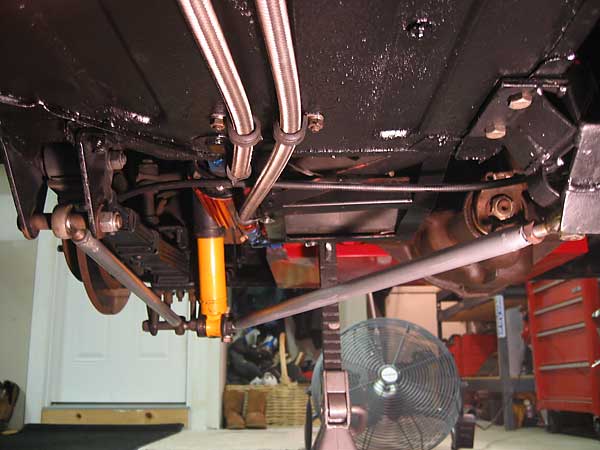
�
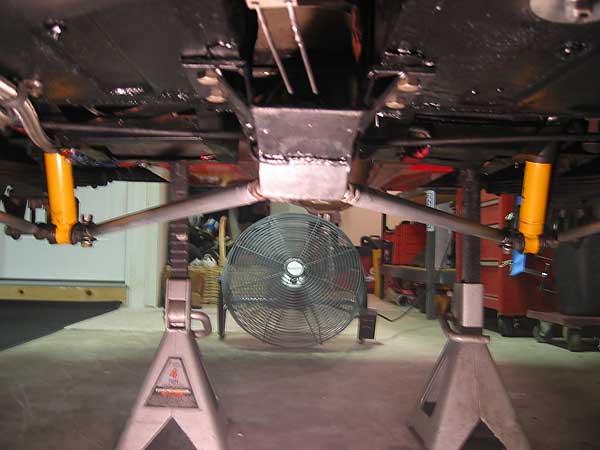
�
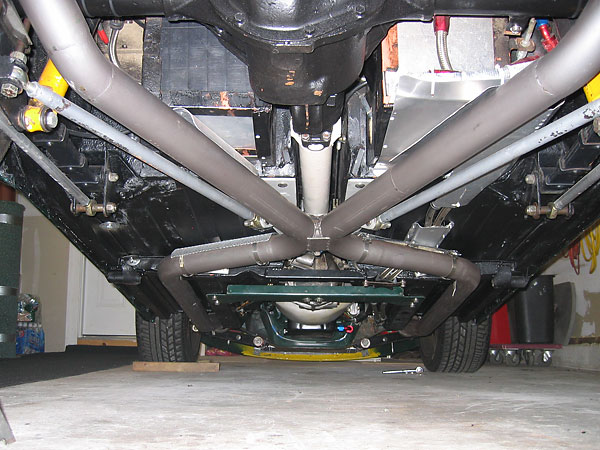
�
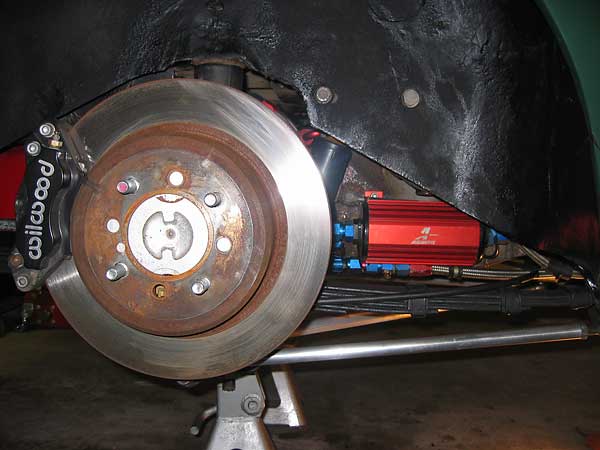
�
�
�
�
�
�
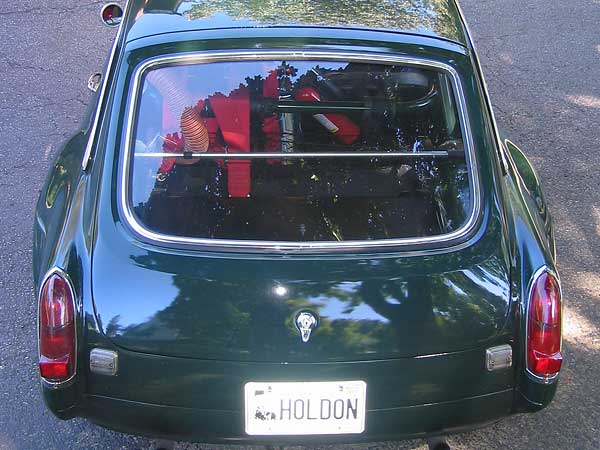
�
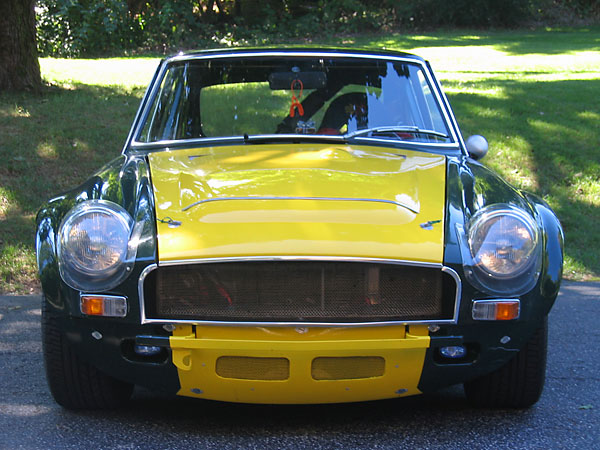
�
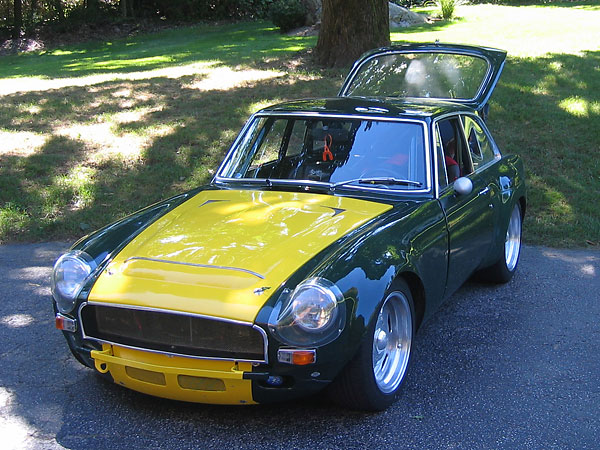
�
�
�
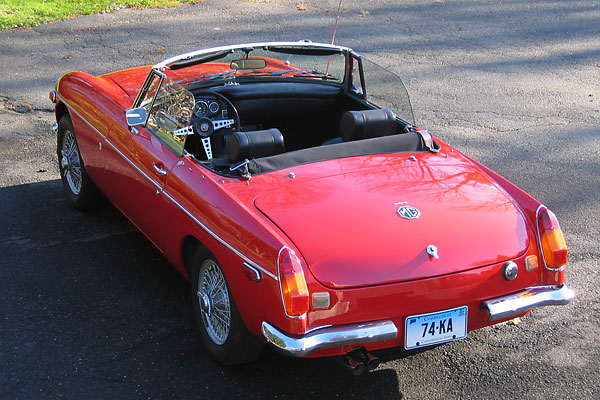
�
Lorenz's other MGB.�

